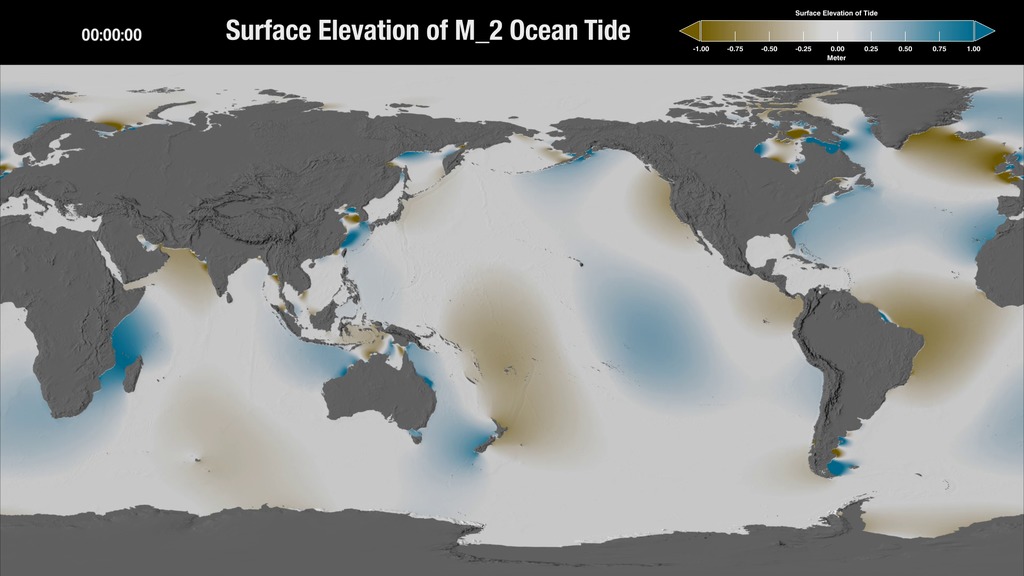Marine Magnetism

A new method uses Earth's magnetic field to detect changes in the heat stored in the ocean.
As Earth warms, much of the extra heat is stored in the planet’s ocean – but monitoring the magnitude of that heat content is a difficult task. A surprising feature of the tides could help, however. Scientists at NASA’s Goddard Space Flight Center are developing a new way to use satellite observations of magnetic fields to measure heat stored in the ocean. Seawater is a good electrical conductor, and how good depends on its temperature. As saltwater sloshes around the ocean basins, its flow attempts to drag the magnetic field lines around, causing slight fluctuations. These fluctuations are relatively small, but have been detected from an increasing number of events including swell, eddies, tsunamis and tides. This is a first attempt at using magnetic satellite data to monitor ocean heat at all depths, and more work needs to be done to refine the technique to fully resolve the oceans' temperature. Watch the videos to learn more.
This animation explains how seawater's property as a good electrical conductor influences Earth's magnetic field lines.
In the video, learn how ocean temperature can be detected in Earth's magnetic field.

Tides due to the moon's gravity pulling on Earth change the elevation of the ocean surface. Blue shows high tides and brown shows low tides.

The observed strength of the magnetic field in the oceans corresponds to the tides.
For More Information
See NASA.gov
Credits
Please give credit for this item to:
NASA's Scientific Visualization Studio
-
Animators
- Brian Monroe (USRA)
- Cheng Zhang (USRA)
-
Scientists
- Terence J. Sabaka (NASA/GSFC)
- Robert H. Tyler (University of Maryland College Park)
-
Producer
- Matthew R. Radcliff (USRA)
-
Writer
- Kate Ramsayer (Telophase)
Release date
This page was originally published on Monday, May 15, 2017.
This page was last updated on Wednesday, May 3, 2023 at 1:47 PM EDT.

![As Earth warms, much of the extra heat is stored in the planet’s ocean – but monitoring the magnitude of that heat content is a difficult task. A surprising feature of the tides could help, however. Scientists at NASA’s Goddard Space Flight Center in Greenbelt, Maryland, are developing a new way to use satellite observations of magnetic fields to measure heat stored in the ocean.Music: War Torn by Brad Smith [BMI] Complete transcript available.Watch this video on the NASA Goddard YouTube channel.](/vis/a010000/a012400/a012456/12456-ocean-heat-AGU-web.jpg)
![Seawater is an electrical conductor, and therefore interacts with the magnetic field. As the tides cycle around the ocean basins, the ocean water essentially tries to pull the geomagnetic field lines along.Because the salty water is a good, but not great, conductor, the interaction is relatively weak. Scientists at NASA Goddard Space Flight Center are developing improved methods to isolate the signal from ocean tides and use that information to determine the heat content of the ocean.Music: "Memory Of A Lifetime" by J Ehrlich [SESAC], Jean-Christophe Beck [BMI]Complete transcript available.Watch this video on the NASA Goddard YouTube channel.](/vis/a010000/a012400/a012450/12450-Tidal-Magnetic-Animation-APR_large.00545_print.jpg)